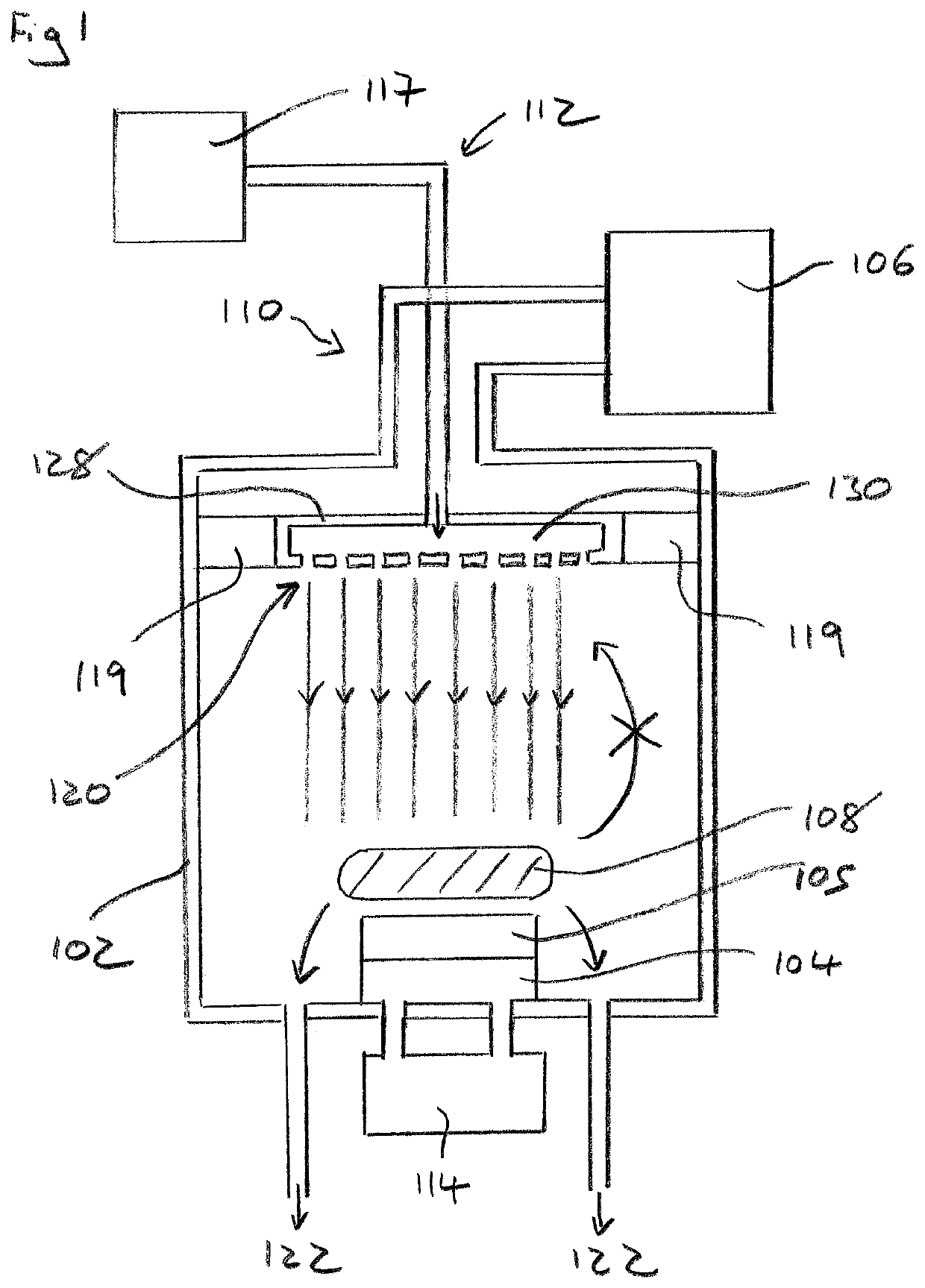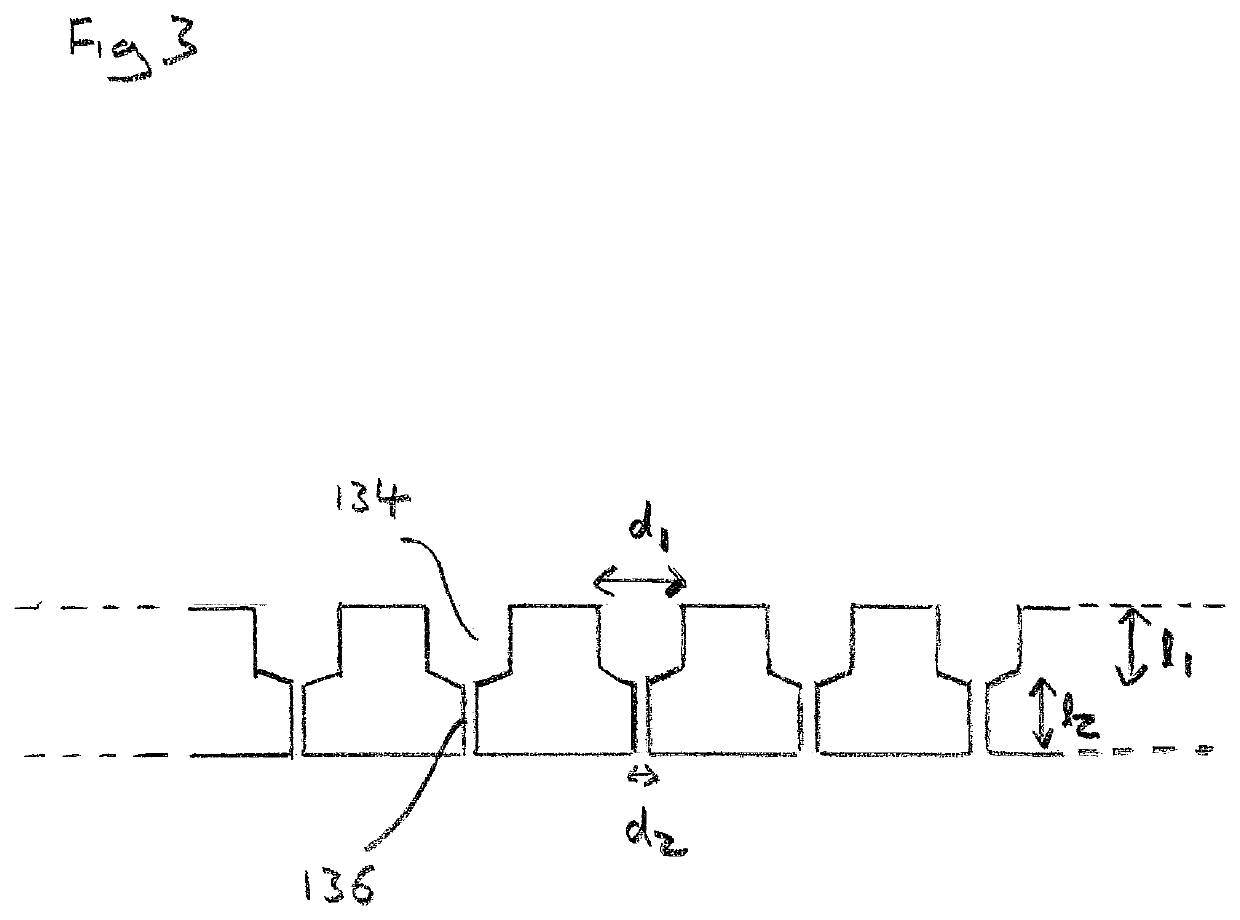Microwave plasma reactor for manufacturing synthetic diamond material
a plasma reactor and diamond technology, applied in the direction of crystal growth process, polycrystalline material growth, chemically reactive gas, etc., can solve the problems of limited area over which diamond film can be deposited, non-uniform diamond film formation, etc., and achieve high gas stream velocities
- Summary
- Abstract
- Description
- Claims
- Application Information
AI Technical Summary
Benefits of technology
Problems solved by technology
Method used
Image
Examples
Embodiment Construction
[0058]FIGS. 1 to 3 show various views of a microwave plasma reactor according to an embodiment of the present invention.
[0059]As can be seen by reference to FIG. 1, the microwave plasma reactor comprises the following basic components: a plasma chamber 102; a substrate holder 104 disposed in the plasma chamber for holding a substrate 105; a microwave generator 106 for forming a plasma 108 within the plasma chamber 102; a microwave coupling configuration 110 for feeding microwaves from the microwave generator 106 into the plasma chamber 102 via a coaxial waveguide and through an annular dielectric window 119; a gas flow system 112, 122 for feeding process gases into the plasma chamber 102 and removing them therefrom; and a substrate coolant system 114 for controlling the temperature of a substrate 105.
[0060]It is found that this invention is best utilized in conjunction with simple modal synthesis chambers, for instance the TM011 mode is advantageous as it has been found to be the mo...
PUM
| Property | Measurement | Unit |
|---|---|---|
| outlet diameter | aaaaa | aaaaa |
| outlet diameter | aaaaa | aaaaa |
| outlet diameter | aaaaa | aaaaa |
Abstract
Description
Claims
Application Information
 Login to View More
Login to View More - R&D
- Intellectual Property
- Life Sciences
- Materials
- Tech Scout
- Unparalleled Data Quality
- Higher Quality Content
- 60% Fewer Hallucinations
Browse by: Latest US Patents, China's latest patents, Technical Efficacy Thesaurus, Application Domain, Technology Topic, Popular Technical Reports.
© 2025 PatSnap. All rights reserved.Legal|Privacy policy|Modern Slavery Act Transparency Statement|Sitemap|About US| Contact US: help@patsnap.com



